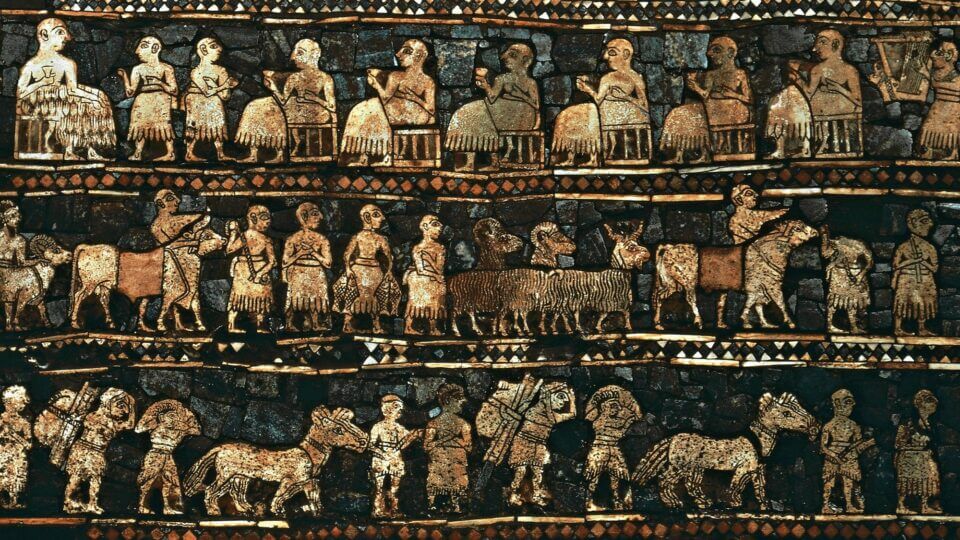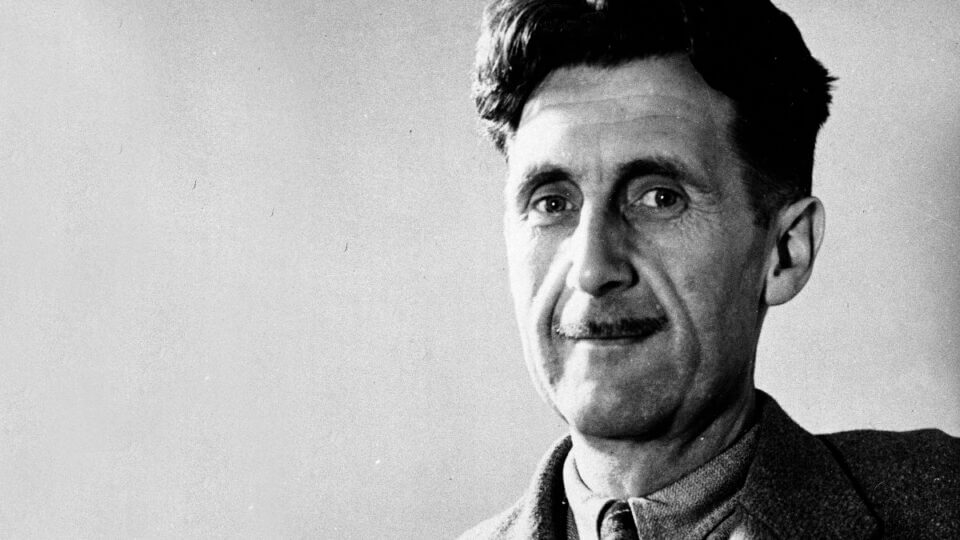
“Furthermore, one of the most—if not the most—crucial contributor to the Long Peace is the spread of democracy.”
When one takes a look at media headlines, it might appear as though the world is plunging into chaos. The Coronavirus (COVID-19) outbreak, civil unrest, the threat of nuclear warfare, climate change, the revival of populism, nationalism, and authoritarianism, a “jobless” future, rising inequality, civil wars, terrorism, the Thucydides trap, hunger, poverty, and disease in developing countries—the list is endless.
With such headlines, it is not surprising that—according to a 2015 YouGov survey—only 6% of people in the United States, 4% of Brits and Germans, and 3% of the French believed that the world was getting better. This is all while facts show otherwise. On virtually all key dimensions of human life—such as poverty, health, literacy, etc.—the world is much, much better today than it was in the past. (Admittedly, while the ongoing COVID-19 pandemic may have undone parts of that progress, sooner or later the crisis will end.)
For example, every day, on average, more than 100,000 people are lifted out of poverty (since 1990). In 1950, 63% of the world population lived in extreme poverty; today, this number is less than 10%.

In fact, as Yuval N. Harari writes, “For the first time in human history, starvation kills fewer people than obesity; plagues kill fewer people than old age; and violence kills fewer people than accidents.”
Evidence in Favor of the Long Peace: Data
It can be stated confidently that we live in the most peaceful era in the history of humankind; in other words, since the end of World War II, we have been living in the period dubbed by American historian John Lewis Gaddis as “the Long Peace.” For most of human history, human beings took war for granted, whereas peace was considered a mere respite between wars. Data from the online project Our World in Data demonstrates that since the dawn of the modern era—and until the middle of the 20th century—great powers were constantly at war with one another.

Nowadays, however, there are no hot wars between powerful nations, and the last one ended several decades ago. According to political scientist John Mueller, on May 15, 1984, the world’s most powerful nations managed to remain at peace with one another for the longest period of time since the days of the Roman Empire.
Nearly 70,000 people were killed in 2017 because of state-based armed conflicts. On the other hand, close to 800,000 people die each year from suicide, according to the World Health Organization. In the era of the Long Peace, an individual is more than ten times more likely to kill himself than be killed by a soldier.
Indeed, for the first time in history, most people, businesses, and governments, when making decisions for the future discount the possibility that their property will be bombed, factories pillaged, and resources looted.
Notably, not only has the number of wars between major powers fallen, but war between developing nations has been disappearing as well. In the time since the United States-led invasion of Iraq in 2003, there have been no interstate wars. Furthermore, the number of battle-related deaths fell from more than 15 per hundred thousand in the late 1940’s and early 1950’s to approximately one per hundred thousand in the 2010’s.

In the past, peace meant the temporary absence of war. In our contemporary epoch, peace is the total impossibility of the occurrence of war, notes Yuval Harari in Homo Deus, and this holds for the vast majority of states. Indeed, for the first time in history, most people, businesses, and governments, when making decisions for the future discount the possibility that their property will be bombed, factories pillaged, and resources looted.
In The Better Angels of Our Nature, Steven Pinker identifies the Long Peace with seven zeros. As he writes, “Zero is the number of
- times that nuclear weapons have been used in conflict;
- times that the two Cold War superpowers fought each other on the battlefield;
- interstate wars that have been fought between countries in Western Europe since the end of World War II;
- developed countries that have expanded their territory since the late 1940s by conquering another country;
- internationally recognized states since World War II that have gone out of existence through conquest.”
Evidence in Favor of the Long Peace: Policy Changes
Apart from statistics that depict the number of wars and deaths, there are other ways to gauge the Long Peace. As The Preamble to the Constitution of The United Nations Educational, Scientific and Cultural Organization (UNESCO) declares, “since wars begin in the minds of men, it is in the minds of men that the defences of peace must be constructed”; consequently, we should explore the reasons behind the retreat of warfare in the realm of not only numbers, but also in policy decisions.
One of the most significant characteristics of a country’s willingness to use force is the extent of conscription. Following the end of World War II, the world has witnessed a decline in the use of drafts, with many nations, including the United States and most European countries, banning conscription outright. Another indicator of the dawn of the Long Peace is the fact that since the end of the Cold War, the size of military forces as a proportion of the labor force decreased from 1.034% in 1991 to 0.798% in 2017. Furthermore, global military spending as a percent of GDP fell from more than 6% in the early 1960’s to just 2.14% in 2018. The proportion of the population in the armed forces and a nation’s spending on the military are among the most effective measures of the embrace of militarism. As such, the declines in both indicators validate the claim that we have been living in Long Peace for the past several decades.
What Has Caused the Long Peace?
It is self-evident that we are enjoying a previously unimaginable era of peace and prosperity. What are the causes behind such a fundamental shift in international relations? We should investigate these causes because it is obviously in our interest to perpetuate this situation. However, there is likely no one, single explanation for the phenomenon, and, most likely, it is a confluence of multiple factors that has facilitated the Long Peace.
One of the most significant determinants of the Long Peace has been the existence of nuclear weapons. Ironically, nuclear weapons, initially devised as the most formidable weapon of mass destruction, were the key to sustaining peace after World War II. They turned a potential war between the superpowers of the day—the United States and the Soviet Union—into an act of collective suicide that would have likely put an end to their respective civilizations. Nuclear weapons spurred both nations to forge more peaceful resolutions to their disputes. To quote Winston Churchill, “It may well be that we shall by a process of sublime irony have reached a stage in this story where safety will be the sturdy child of terror, and survival the twin brother of annihilation.”
Another reason for the Long Peace is the rising standards of living that have been discussed. After all, if a particular country is poor, hungry, and illiterate, it is more likely to wage wars with its neighbors to obtain valuable resources—or to ignite nationalist sentiments to cement its legitimacy and the appeal of its ruler. In recent decades, however, humanity has made tremendous strides in eradicating poverty, disease, illiteracy, and starvation; it can be reasonably concluded, thus, that these achievements have at least partially helped to preserve the Long Peace between developing nations.
In his 1795 essay “Perpetual Peace,” Immanuel Kant wrote that, among other things, “the spirit of commerce […] sooner or later takes hold of every nation, and is incompatible with war.” Indeed, expanding international trade and globalization makes war less appealing because a potential war would be an act of economic suicide and, therefore, states rarely resort to the use of force. Countries that have strong commercial ties with one another have too much to lose by engaging in warfare. According to a 2000 study by John R. Oneal of The Norwegian Nobel Institute, “The probability of a dispute declines by 49 percent, in comparison to the typical dyad, if both states are economically dependent on their commercial relations.” To this point, according to the World Bank, the share of trade, as a proportion of GDP, doubled after the end of World War II: from 24% in 1960 to over 59% in 2018. The advent of globalization and the resulting interdependence of the global players, which is sometimes referred to as “capitalist peace,” plays an essential role.
Furthermore, one of the most—if not the most—crucial contributor to the Long Peace is the spread of democracy. According to the democratic peace theory, democracies rarely go to war with each other because
- democracies aim to peacefully reconcile the interests of a variety of groups, and they project this logic into international affairs;
- democratic checks and balances serve as counterforces to leaders with autocratic tendencies, who often push their countries into wars for personal glories or the arousal of domestic support through nationalist feelings;
- in democracies, people can easily dismiss incompetent or corrupt leadership that constantly wages wars to the detriment of ordinary people.
There were just twelve democracies at the end of World War II; today, there are 99; and the share of the world population living in democracies has quadrupled since the early 1950’s. Undoubtedly, democratic governance is a critical pillar of global peace.
In this day and age, economic accomplishments have replaced military ones for most of us, and humankind has experienced a change in values that places the inherent worthiness of peace higher.
Great changes begin from within, the truism holds. The shifts in the worldwide culture following the end of World War II are, to a certain degree, responsible for the emergence of the Long Peace. In this day and age, economic accomplishments have replaced military ones for most of us, and humankind has experienced a change in values that places the inherent worthiness of peace higher. Not so long ago warfare was deemed glorious and noble. As Steven Pinker writes in Enlightenment Now:
“Today, the idea that it is inherently noble to kill and maim people and destroy their roads, bridges, farms, dwellings, schools, and hospitals strikes us as the raving of a madman. But during the 19th-century counter-Enlightenment, it all made sense. Romantic militarism became increasingly fashionable, not just among Pickelhaube-topped military officers but among many artists and intellectuals. War ‘enlarges the mind of a people and raises their character,’ wrote Alexis de Tocqueville. It is ‘life itself,’ said Émile Zola; ‘the foundation of all the arts . . . [and] the high virtues and faculties of man,’ wrote John Ruskin.”
Moreover, when analyzing the contributing factors to the Long Peace, we should not forget about arguably the most important driving force of society: technological change. The global economy is gradually turning from an economy based on providing goods and services to one revolving around information and knowledge. According to a 2016 report by the McKinsey Global Institute, in the modern economy, digital flows exert a larger impact on GDP growth than trade in goods. Since time immemorial, factories, land, oil wells, gold mines—otherwise stated, material assets—have held the most value. Today, on the other hand, data is eclipsing traditional sources of wealth as the most significant asset, and data flows have already become one of the primary drivers of global economic growth. And, as the global economy is becoming knowledge and data-driven, there is little benefit from conquering land and factories. In the words of Yuval Harari, “In 1998 it made sense for Rwanda to seize and loot the rich coltan mines of neighbouring Congo” since “this ore was in high demand for the manufacture of mobile phones and laptops, and Congo held 80 per cent of the world’s coltan reserves.” But, “it would have made no sense for China to invade California and seize Silicon Valley, for even if the Chinese could somehow prevail on the battlefield, there were no silicon mines to loot in Silicon Valley. Instead, the Chinese have earned billions of dollars from cooperating with hi-tech giants such as Apple and Microsoft, buying their software and manufacturing their products. What Rwanda earned from an entire year of looting Congolese coltan, the Chinese earn in a single day of peaceful commerce.”
Lastly, one of the most significant factors that preserves the Long Peace is the establishment and subsequent expansion of the rule-based world order (or the liberal international order). Thanks to the formation of the rule-based order in the wake of World War II, international relations have been governed by an overarching framework of rules that endeavors to enforce justice, ensure peace, and counter aggression and violations of norms. Underpinned by the global dominance of the United States and its allies following the end of the Cold War, this significant change in the international order—the idea that war is illegal—is one of the most important contributors to global peace.
In the past, if one country wanted to fill its treasury with more gold, it could declare war and conquer some territory from its neighbor, and nothing would prevent it from doing so. Today, however, this is almost impossible, since the sovereignty of each nation and the inviolability of its borders are enshrined in international law and, if these norms are breached, the culprit is punished. For example, after Iraq invaded Kuwait in 1990, U.S. President George H. W. Bush organized an international coalition of forces from 34 other countries that effectively penalized Saddam Hussein’s Iraq for its actions.
To conclude, it is the combination of various factors that allowed for the creation and maintenance of the Long Peace, including
- nuclear weapons—the foundation of the MAD doctrine (mutually assured destruction);
- rising standards of living—diminishment of the importance of causes of wars;
- capitalist peace—globalization and growing economic interdependence;
- democratic peace—the spread of democracies around the world;
- cultural shift—people have become more peaceful;
- technological change—meaninglessness of waging wars due to the advent of the digital economy;
- formation of the rule-based world order—a robust mechanism that prohibits wars.
Will the Long Peace Prevail?
However, it is far from guaranteed that the Long Peace will hold indefinitely, for forthcoming technological developments are likely to pave the way for new kinds of warfare. For instance, cyberwarfare might provide smaller, rogue nations, like Iran and North Korea, with an ability effectively to destabilize their adversaries.
Furthermore, we should never ignore “Black Swans,” a term coined by Nassim Nicholas Taleb that describes rare, consequential, and unpredictable events that prove to be enormously significant. Black Swans are an inherent characteristic of human events for the following reason: They set a new precedent instead of representing the continuation of a past trend. We should never say, for instance, that we will never have a war on the scale of World War II again because before that conflict erupted, it was widely believed that no war could be worse than World War I (World War I was, after all, called “the war to end all wars”). As Taleb puts it in his 2012 book Antifragile, the “so-called worst-case event, when it happened, exceeded the worst case at the time.”
Following World War II, humanity was on the brink of nuclear annihilation roughly nine times—mostly due to the technical problems, such as a radar mistaking the Moon for a missile, an American plane accidentally wandering into Soviet airspace at the height of the Cuban missile crisis, or, most critically, Soviet satellites malfunctioning and mistaking reflected sunlight for American Intercontinental ballistic missiles (ICBMs), etc.
Because of the inevitability of Black Swans, there is no reason to think that the Long Peace will be indefinite. The future of worldwide peace is unsettling; nevertheless, just as we managed to overcome so many threats in the past, provided that we undertake necessary measures, there is a good chance that the idea of perpetual peace will become actualized. If we desire perpetual peace, then we will most likely need some kind of global federation, where internal economic and social affairs are left to individual states, while some strictly defined powers (such as counter-terrorism operations and international crime) are transferred to an international authority. This is the only way can we avoid the zero-sum pursuit of national interests, as well as military competitions. As Friedrich Hayek wrote in The Road to Serfdom, “an international authority which effectively limits the powers of the state over the individual will be one of the best safeguards of peace.” However, there is a reason to think that perpetual peace will be possible not only through the creation of a global confederation. If the spread of democracies and free-market capitalism continues, our standards of living continue to rise, technological change accelerates our progress, etc., then perhaps the problem of sustaining the Long Peace is, in the words of Immanuel Kant, “a problem which gradually works out its own solution.” In the long run, perpetuating the Long Peace should be one of humanity’s primary goals. For as Victor Hugo put it, “Peace is the virtue of civilization. War is its crime.”.
Sukhayl Niyazov is a freelance writer in Greece.










